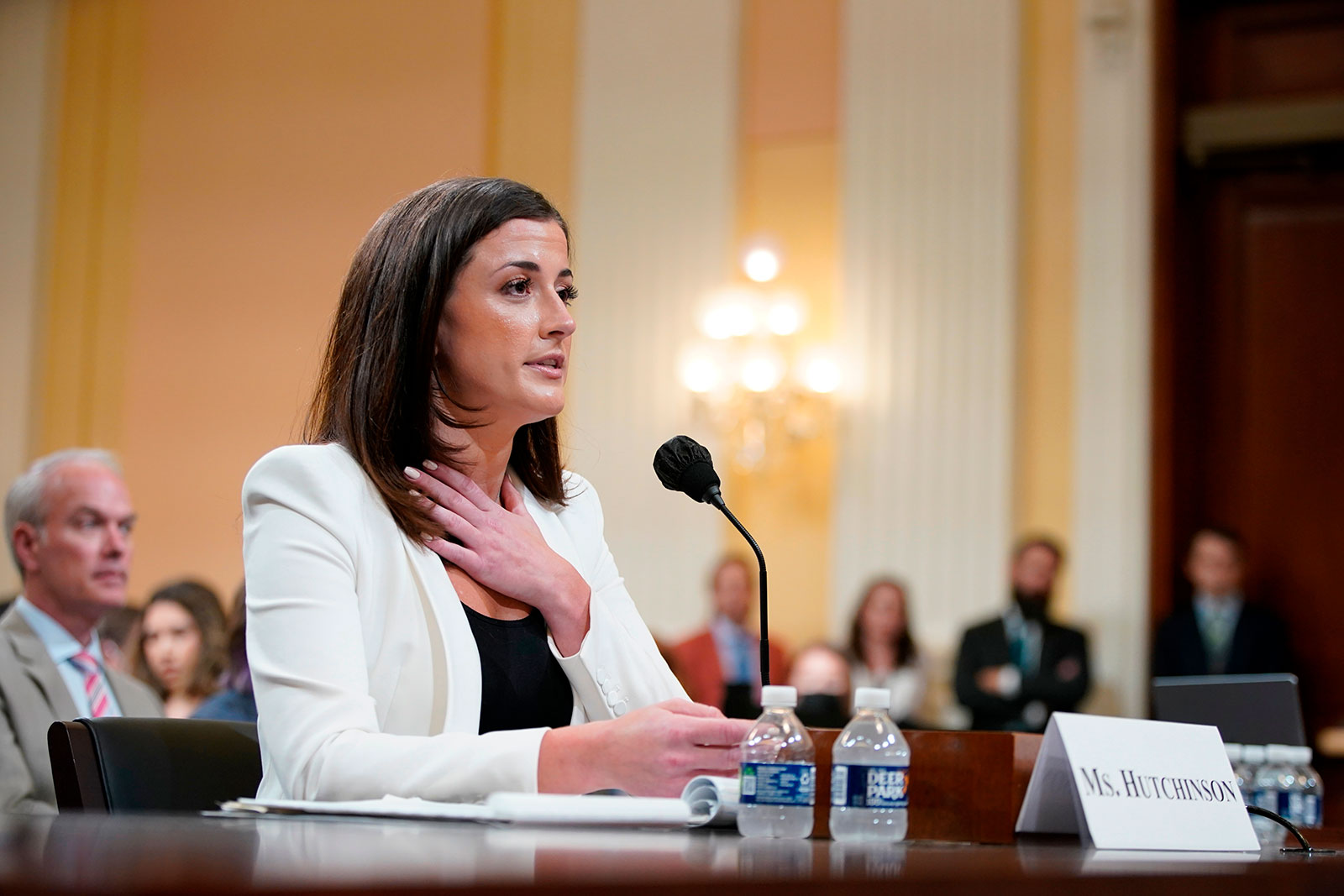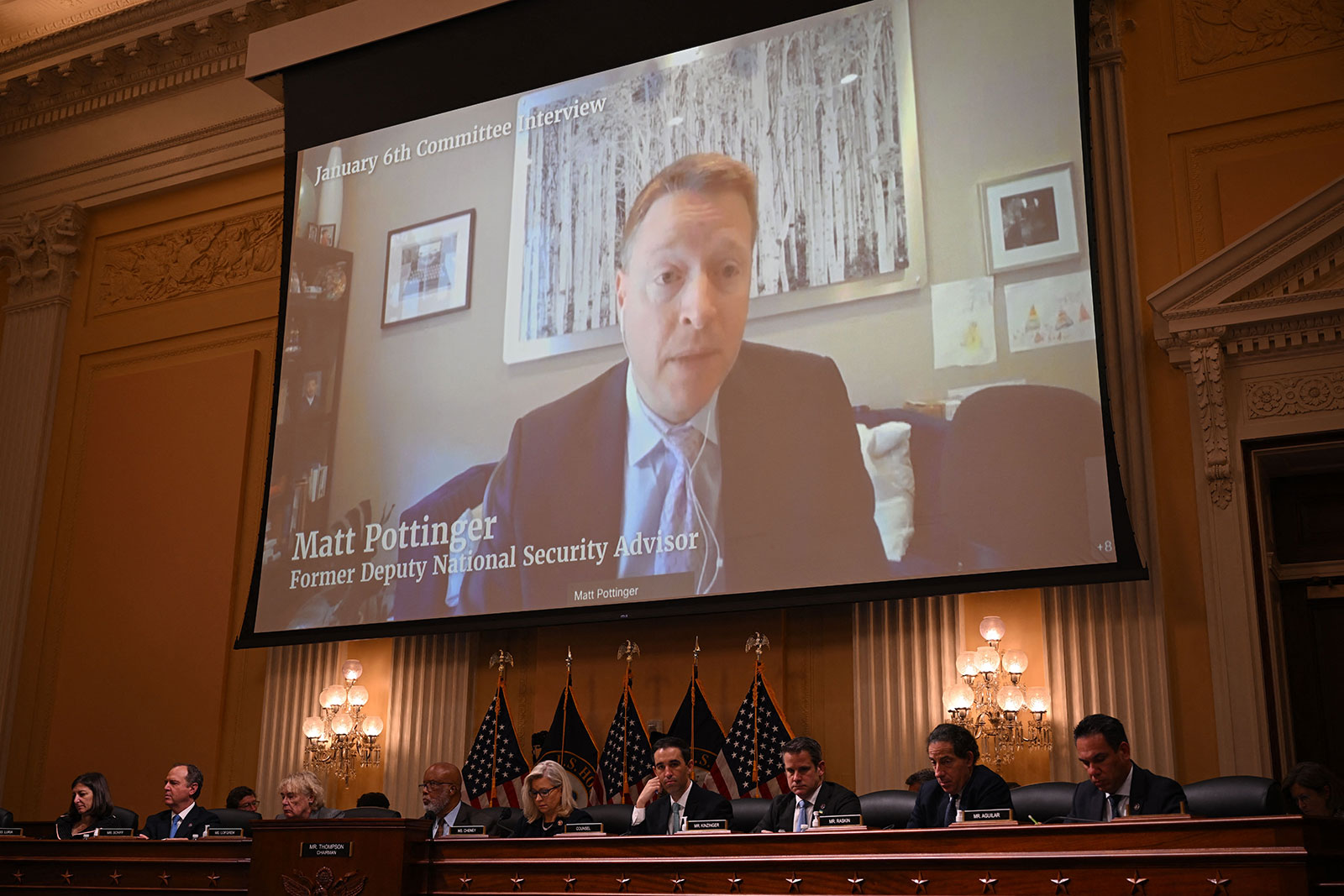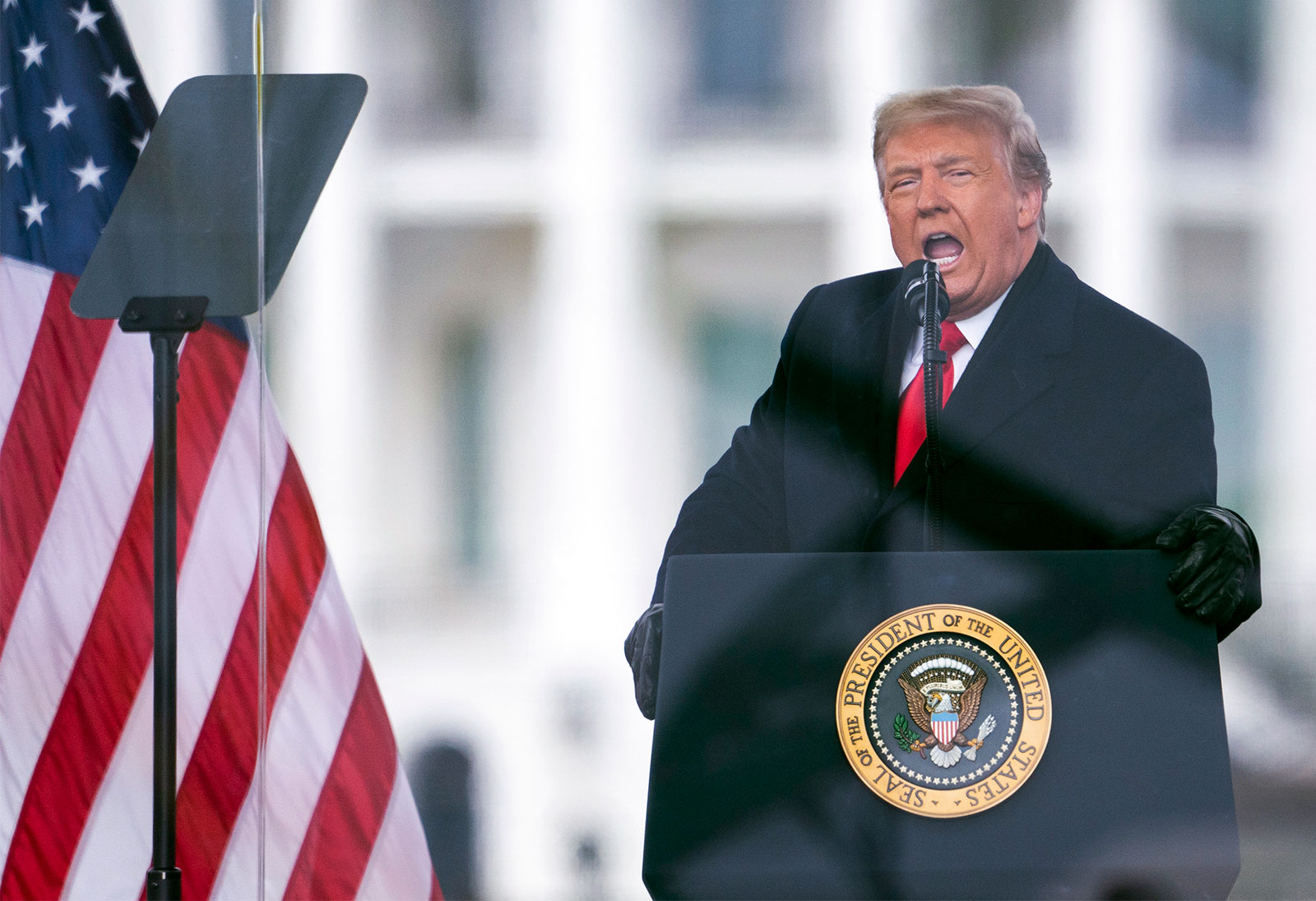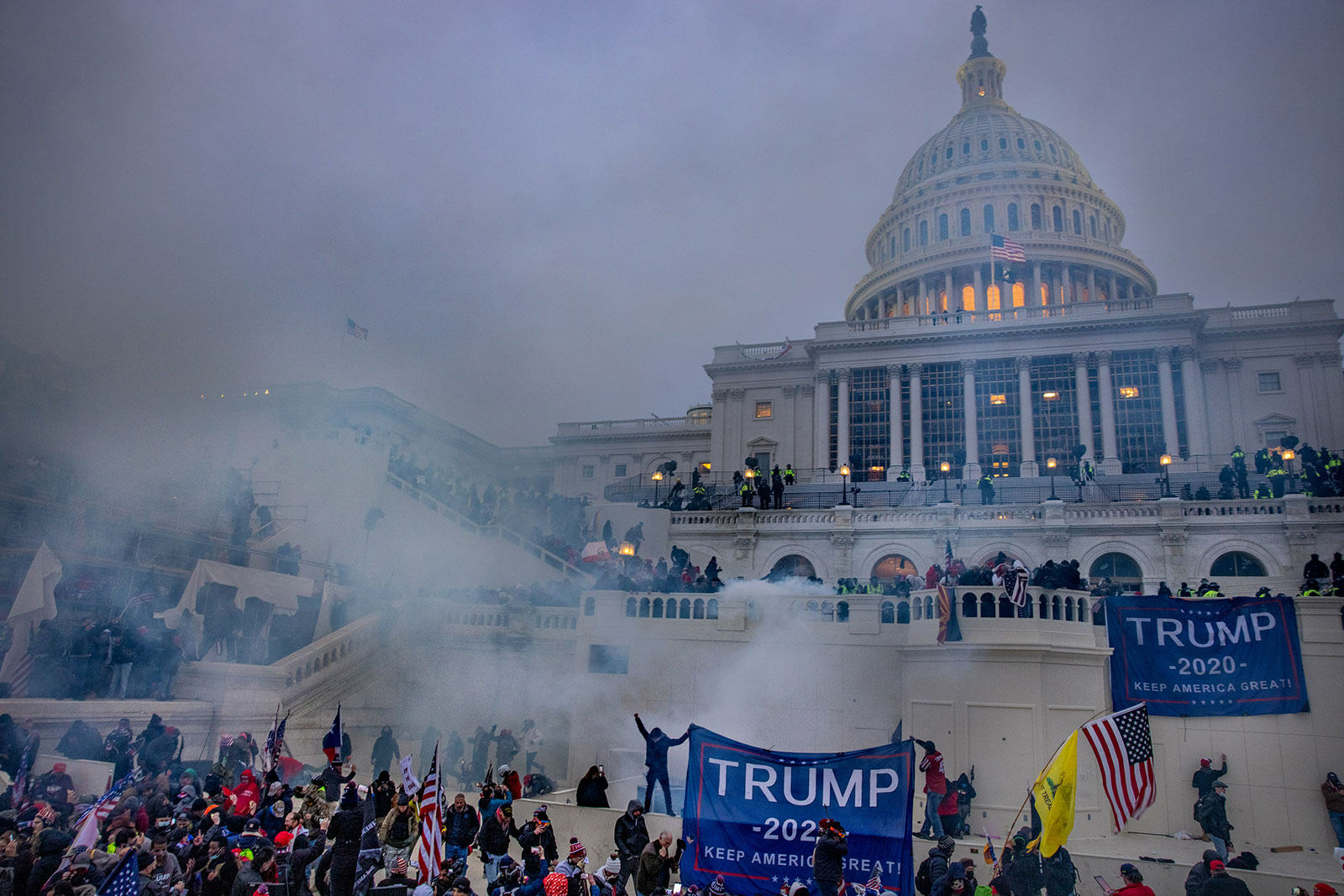
Tonight’s hearing to focus on Trump’s actions
What we know about the 187 minutes of Trump’s inaction on Jan. 6
From CNN’s Jeremy Herb, Ryan Nobles, Zachary Cohen and Annie Grayer
The House Jan. 6 committee’s final prime-time hearing Thursday will be all about 187 minutes.
That’s the period of a little more than three hours as the riot unfolded in the US Capitol that the House select committee has argued then-President Donald Trump was derelict in his duties.
The committee says it plans to show, minute-by-minute, how Trump failed to make any effort to tell the rioters to leave the Capitol or to try to help lawmakers — and then-Vice President Mike Pence — as they were forced to flee the House and Senate chambers.
The 187 minutes began at 1:10 p.m. ET on Jan. 6, 2021, as Trump was wrapping up his speech at the Ellipse. This is when he told his supporters to march to the Capitol, so they could pressure lawmakers to overturn the election while they met for a joint session of Congress to formally certify President Biden’s victory.
Exactly 187 minutes later, at 4:17 p.m. ET, Trump posted a video on Twitter. In the clip, he said for the first time that his supporters should leave the Capitol. He also heaped praise on the rioters and repeated his debunked lies about the election, which had spurred the riot in the first place.
Watch CNN’s John King run through what we know about what happened during the 187 minutes:
The committee is expected to show clips of video outtakes of Trump recording a message a day after the riot
From CNN’s Ryan Nobles, Zachary Cohen, Annie Grayer and Jamie Gangel

The House committee investigating the insurrection plans to show footage at Thursday’s hearing of then-President Donald Trump having difficulty working through efforts to tape a message to his supporters on Jan. 7, 2021, the day after the Capitol riot, sources familiar with the committee’s plans tell CNN.
The outtakes, first reported by The Washington Post, were part of production of a speech Trump gave the night after the riot. They show Trump having a difficult time working through the effort to tape the message. Trump refused to say the election results had been settled and attempted to call the rioters patriots. He also went to great lengths to not accuse them of any wrongdoing.
A spokesperson for the Jan. 6 select committee declined to comment on the outtakes.
Rep. Jamie Raskin, a Maryland Democrat who is a member of the committee, confirmed Wednesday night to CNN’s Anderson Cooper that the panel has the outtakes and plans to share some of them during the hearing.
“The President displayed extreme difficulty in completing his remarks,” Raskin said on “Anderson Cooper 360.”
“It’s extremely revealing how exactly he went about making those statements, and we’re going to let everybody see parts of that,” he added.
Rep. Adam Schiff, another committee member, told CNN’s Don Lemon later Wednesday that the outtakes “will be significant in terms of what the President was willing to say and what he wasn’t willing to say.”
The California Democrat said the outtakes will show “all of those who are urging him to say something to do something to stop the violence. You’ll hear the terrible lack of a response from the President, and you’ll hear more about how he was ultimately prevailed upon to say something and what he was willing to say and what he wasn’t.”
The video tape outtakes will be one part of a larger presentation during which the committee plans to detail Trump’s lack of attention to the ongoing riot. The committee has said it will focus on the 187 minutes that Trump sat back, refusing to act, as the Capitol was under siege. Some committee members have described this as Trump’s “dereliction of duty.”
Read more here.
Jan. 6 committee overwhelmed with evidence for Thursday night’s hearing
From CNN’s Ryan Nobles
The House select committee investigating the Jan. 6 insurrection has needed to edit down overwhelming evidence in order to fit within the time constraints of a prime-time hearing on Thursday. As evidence came pouring in, members and staff began constructing their plan for their biggest hearing yet.
They had so much content that their initial hearing plan would’ve been four hours long. Given the constraints of a prime-time television audience, they were forced to cut.
They cut so much that the “teaser” video they put out earlier Thursday ahead of the hearing was not in fact a tease. None of the content released through Republican Rep. Adam Kinzinger’s Twitter feed is expected to be seen tonight. The release of the clips was just a way for the committee to present evidence they didn’t have time to include in Thursday’s hearing.
The overwhelming amount of evidence, that members say is still coming in, is part of why they are considering additional hearings in the weeks ahead.
Hutchinson’s testimony will be corroborated by evidence the panel presents tonight, committee member says
From CNN’s Manu Raju

Republican Rep. Adam Kinzinger, who will help lead part of tonight’s hearing, told CNN that Cassidy Hutchison’s testimony will be corroborated by the evidence they plan to present during the eighth hearing on Thursday night.
“There will be no question over her veracity,” Kinzinger, a member of the House select committee investigating the Jan. 6 insurrection, told CNN today.
Hutchison’s previously testified how Trump didn’t want to do anything to stem the violence on Jan. 6. She also testified that former White House counsel Pat Cipollone confronted former White House chief of staff Mark Meadows in a bid to pressure Trump to do something to prevent deaths from occurring at the Capitol.
The committee plans to use key pieces of Cipollone’s extensive testimony to detail Trump’s actions, according to Kinzinger and another committee source.
As he was coming under pressure to do something, the committee will show how Trump was more concerned about trying to figure out a way to overturn the election results than he was about stopping the violence.
The hearing will show how Trump was lobbying members of Congress to keep the floor debate going on Jan. 6 and delay the certification as long as possible, according to a source familiar with the matter.
As he was being pressured to act, Trump was making and fielding phone calls from his allies on Jan. 6. One ally, Republican Rep. Matt Gaetz of Florida, told CNN Thursday he spoke to Trump multiple times that day. Gaetz declined to say what they spoke about.
2 former Trump aides are expected to testify about what happened inside the White House as the riot unfolded
From CNN’s Kristen Holmes and Zachary Cohen

During tonight’s hearing, former deputy national security adviser Matt Pottinger and former deputy press secretary Sarah Matthews are expected to give a behind the scenes look at what was going on inside the White House as the violence was unfolding at the Capitol on Jan. 6, as the select committee focuses on former President Trump’s lack of action that day.
Pottinger and Matthews were both in close contact with members of the small group of staffers surrounding the President, as he watched the deadly attack unfold on television.
Pottinger has told the committee he did not see Trump that day but did go into the Oval Office at around 3 p.m. ET and spoke to then-White House chief of staff Mark Meadows, a source familiar with his closed-door testimony tells CNN.
Trump was in the adjacent dining room. Pottinger informed Meadows that he had been told the National Guard was not yet at the Capitol, and tried to get an answer on why that had yet to happen, the source said.
Meadows, who Pottinger described as appearing visibly frustrated in that moment, responded by saying he had made several calls to a top Pentagon official in an effort to get the National Guard to Capitol Hill, according to the source familiar with Pottinger’s testimony.
In previous testimony, Chairman of the Joint Chiefs of Staff Gen. Mark Milley described his discussions with Meadows as trying to ensure the military portrayed the president as being in control.
“I immediately interpreted that as politics, politics, politics. Red flag for me, personally. No action. But I remember it distinctly,” Milley said in testimony played at the hearing.

Matthews was one of a number of White House aides pushing for a statement from Trump condemning the violence. While she did not speak to Trump day, a source tells CNN, she will shed light on discussions surrounding the effort to get him to issue a response. A source tells CNN, she will shed light on discussions surrounding that effort.
Pottinger and Matthews, who both resigned following the events of Jan. 6, will also be able to give insight into the inner workings of the Trump White House. Pottinger was with the administration since the beginning.
Neither witness has been fully briefed on all the video clips that will be shown today, or the full extent of the committees evidence that will be presented, a source familiar with the conversations around the testimony tells CNN.
Here’s what to watch for during today’s prime-time Jan. 6 committee hearing
From CNN’s Jeremy Herb, Ryan Nobles, Zachary Cohen and Annie Grayer

The House select committee investigating Jan. 6, 2021, is returning to prime time for its eighth hearing that will seek to show in minute-by-minute detail how former President Donald Trump failed to act while the US Capitol was under attack.
The committee’s focus at Thursday’s 8 p.m. ET hearing will be on the 187 minutes that elapsed between Trump concluding his speech at the Ellipse at 1 p.m. ET, when he told his supporters to march to the Capitol, to when Trump released a video at 4:17 p.m ET — when he told the rioters to leave the Capitol.
Committee aides say that the panel will show how Trump “refused to act to defend the Capitol” while rioters were attacking it. The committee has spoken with multiple former Trump aides who were with him that day — including former White House counsel Pat Cipollone — and their video depositions are expected to be used to help tell the story of what was going on inside the White House on Jan. 6.
Cipollone, for instance, told former White House chief of staff Mark Meadows that Trump needed to intervene or else “people are going to die,” former Meadows aide Cassidy Hutchinson previously testified.
Meadows responded by telling Cipollone that Trump “doesn’t want to do anything,” Hutchinson said, and that Trump even agreed with the rioters chanting about hanging Vice President Mike Pence.
The House is also expected to show clips of video outtakes of Trump recording a message to his supporters on Jan. 7, 2021, the day after the riot.
Two former White House aides who quit after Jan. 6 former deputy national security adviser Matthew Pottinger and former deputy press secretary Sarah Matthews — will testify at Thursday’s hearing, CNN has previously reported (the committee has not officially announced witnesses for the event).
Previous reporting from CNN and others, as well as excerpts from committee depositions that have been publicly released — have detailed how Trump was watching television outside the Oval Office as rioters breached the Capitol walls. Before Trump released his video telling the rioters to go home, he sent out several tweets that did not tell them to leave the Capitol — as well as one attacking Pence for not joining his scheme to try to overturn the 2020 election.
On Thursday, GOP Rep. Adam Kinzinger, a member of the Jan. 6 committee who will be leading the hearing, tweeted new video clips from depositions of Trump aides describing how he watched the Capitol riot unfolding on TV in his private dining room.
The deposition clips are from White House Counsel Pat Cipollone, Pence’s national security adviser Keith Kellogg, Trump’s executive assistant Molly Michael, and White House press secretary Kayleigh McEnany.
Read more about what to watch for at today’s hearing.
The panel will focus tonight on what Trump was doing during the riot. These are the big unanswered questions.
From CNN’s Jeremy Herb and Marshall Cohen

The House Jan. 6 committee’s prime-time hearing Thursday is all about 187 minutes.
That’s the period of a little more than three hours as the riot unfolded in the US Capitol — starting from when his speech at the Eclipse ended to when he sent a tweet telling people to leave the Capitol.
While lots of details about Trump’s response on Jan. 6, 2021 are already known, there are still lingering questions about what the former President was doing.
For instance, Trump spoke with at least two Republican lawmakers during the early stages of the insurrection: House Minority Leader Kevin McCarthy, a California Republican, and Alabama Sen. Tommy Tuberville.
While there has been previous reporting about McCarthy’s heated phone call, including that Trump told him that the rioters were “more upset about the election than you are,” McCarthy has not spoken at length about the conversation. The committee issued a subpoena to McCarthy and four other lawmakers in an unprecedented move earlier this year, though McCarthy has not agreed to testify or hand over documents.
Questions also remain about who else Trump spoke with by phone on Jan. 6 during the period when the Capitol was breached. There are gaps in the White House call logs on Jan. 6, providing incomplete public accounting of the conversations Trump had that day.
Another key question the committee is likely to dive into is how it was that former Vice President Mike Pence — and not Trump — who ordered the National Guard to respond to the riot. At a hearing last month, the committee played testimony from Chairman of the Joint Chiefs Gen. Mark Milley saying it was Pence who gave him “very direct, unambiguous orders” to get the Guard to the Capitol.
But Milley testified that Meadows told him to say that it was Trump, not Pence, who gave the order.
“He said: We have to kill the narrative that the Vice President is making all the decisions,” Milley said in his video deposition about what Meadows told him. “We need to establish the narrative, you know, that the President is still in charge and that things are steady or stable, or words to that effect.”
Read more about what unfolded during the 187 minutes here.
The DHS inspector general told Secret Service to stop investigating potentially missing texts, letter shows
From CNN’s Whitney Wild and Jeremy Herb

The Department of Homeland Security inspector general directed the Secret Service to stop its internal investigations into what happened to text messages related to Jan. 6 that may have been deleted, according to a letter reviewed by CNN.
The inspector general wrote that the Secret Service should stop investigating the matter because it could interfere with the inspector general’s own investigation into what happened to the agency’s text messages.
The letter adds to the growing tension between the Secret Service and the DHS inspector general over the potentially missing text messages, which are being sought by the House select committee as part of its investigation into former President Donald Trump’s actions and movements on Jan. 6, 2021.
“To ensure the integrity of our investigation, the USSS must not engage in any further investigative activities regarding the collection and preservation of the evidence referenced above,” DHS deputy inspector general Gladys Ayala wrote in a letter to Secret Service Director James Murray on Wednesday evening. “This includes immediately refraining from interviewing potential witnesses, collecting devices or taking any other action that would interfere with an ongoing criminal investigation.”
The inspector general wrote that the Secret Service should explain what interviews had already been conducted related to the text messages, along with the “scope off the questioning, and what, if any, warnings were given to the witness(es).” The inspector general told the Secret Service to respond by Monday.
The new letter comes after the Secret Service was only able to provide a single text message to the inspector general, who had requested a month’s worth of records for 24 Secret Service personnel, according to a letter to the select committee.
Read more here.
You likely will hear the panel reference the “187 minutes” that unfolded on Jan. 6. Here’s what it means.
From CNN’s Jeremy Herb and Marshall Cohen

Tonight’s Jan. 6 select committee hearing will focus on what lawmakers have dubbed the “187 minutes” – the three-plus hours when then-President Donald Trump did not step in to stop the US Capitol riot on Jan. 6, 2021.
Democratic Rep. Elaine Luria of Virginia, who will be leading Thursday’s hearing with GOP Rep. Adam Kinzinger of Illinois, told CNN the committee will “go through pretty much minute by minute” of Trump’s actions. “He was doing nothing to actually stop the riot,” the Virginia Democrat told CNN’s Dana Bash on “State of the Union” on Sunday.
In the previous hearings, the committee has sought to tie Trump to the violence at the Capitol, showing how he was warned by his aides that his claims the election was stolen were baseless and that there was a risk of violence on Jan. 6, 2021. The committee’s final hearing in this series will attempt to illustrate how the former President “refused to act to defend the Capitol as a violent mob stormed the Capitol,” according to committee aides.
Here is when the window of time begins and when it ends:
The 187 minutes began at 1:10 p.m. ET, in the final moments of Trump’s speech at the Ellipse, when he told his supporters to go to the Capitol.
“So we’re going to walk down Pennsylvania Avenue — I love Pennsylvania Avenue — and we’re going to the Capitol. And we’re going to try and give — the Democrats are hopeless, they’re never voting for anything, not even one vote. But we’re going to try and give our Republicans — the weak ones, because the strong ones don’t need any of our help — we’re going to try and give them the kind of pride and boldness that they need to take back our country. So let’s walk down Pennsylvania Avenue,” Trump said.
After leaving the stage at the Ellipse, Trump got into his motorcade and angrily tried to convince his drivers to take him to the Capitol, according to testimony from Trump White House aide Cassidy Hutchinson. The agents refused, telling him that the scene was too dangerous and unstable.
Trump then watched TV news coverage of the chaos unfolding at the Capitol, according to a book by Washington Post reporters Bob Woodward and Robert Costa, and according to then-White House press secretary Stephanie Grisham, who said Trump was “gleefully” watching the news.
Trump posted three tweets during this critical timeframe. The first tweet criticized Pence for refusing to overturn the election. The second and third tweets told the rioters to “stay peaceful” and to “respect the law” — but notably, Trump did not instruct his supporters to leave the Capitol.
During the 187 minutes, a wide array of Republican lawmakers, former Trump officials and conservative media personalities texted Meadows, saying Trump needed to intervene, CNN has previously reported.
And the 187 minutes ended at 4:17 p.m. ET, when Trump tweeted out a video telling his supporters to leave the Capitol. He also heaped praise on the rioters and repeated his debunked lies about the election, which had spurred the riot in the first place.
“I know your pain. I know you’re hurt. We had an election that was stolen from us. It was a landslide election, and everyone knows it, especially the other side, but you have to go home now. We have to have peace. We have to have law and order. We have to respect our great people in law and order. We don’t want anybody hurt. It’s a very tough period of time. There’s never been a time like this where such a thing happened, where they could take it away from all of us, from me, from you, from our country. This was a fraudulent election, but we can’t play into the hands of these people. We have to have peace. So, go home. We love you. You’re very special. You’ve seen what happens. You see the way others are treated that are so bad and so evil. I know how you feel. But go home and go home at peace,” Trump said in the video.
Why this matters: This timeframe is central to the committee’s mission. Republican Rep. Liz Cheney of Wyoming, the committee’s GOP vice chair, has repeatedly said that the evidence obtained by the panel about these 187 minutes provides a clear example of Trump’s “supreme dereliction of duty” throughout the insurrection.
The panel’s Democratic chairman, Rep. Bennie Thompson of Mississippi, said earlier this year, “The President was told, ‘You need to say directly to your people to go home, leave the Capitol.’ And so, it took over 187 minutes to make that simple statement. Something’s wrong with that.”
Read more about the 187 minutes here.
Source: https://www.cnn.com/politics/live-news/january-6-hearings-july-21/index.html















